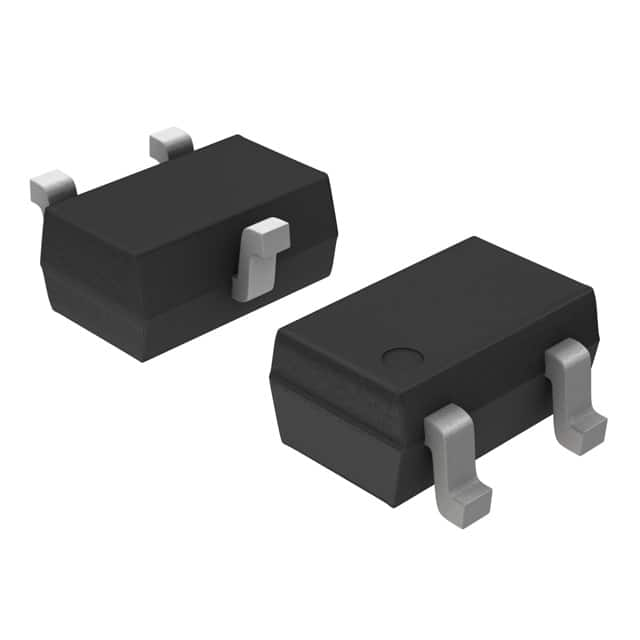Viz Specifikace pro podrobnosti o produktu.

BAT54WT1
Product Overview
BAT54WT1 belongs to the category of Schottky barrier diodes. These diodes are widely used in electronic circuits for their low forward voltage drop and fast switching characteristics. The BAT54WT1 is commonly utilized in applications such as signal demodulation, voltage clamping, and reverse polarity protection. It comes in a small SOT-323 package and is available in tape and reel packaging with a quantity of 3000 units per reel.
Specifications
- Forward Voltage Drop: 0.32V at 1mA
- Reverse Voltage: 30V
- Forward Current: 200mA
- Power Dissipation: 225mW
- Operating Temperature Range: -65°C to +125°C
Detailed Pin Configuration
The BAT54WT1 has three pins: anode, cathode, and common cathode. The anode and cathode pins are used for the connection to the circuit, while the common cathode pin serves as the reference point.
Functional Features
The BAT54WT1 offers fast switching speed, low forward voltage, and high current capability. These features make it suitable for applications requiring efficient energy conversion and minimal power loss.
Advantages and Disadvantages
Advantages
- Low forward voltage drop
- Fast switching speed
- High current capability
Disadvantages
- Limited reverse voltage tolerance
- Sensitivity to overvoltage conditions
Working Principles
The BAT54WT1 operates based on the Schottky barrier principle, where the metal-semiconductor junction creates a low forward voltage drop during conduction. This allows for efficient energy transfer and rapid switching performance.
Detailed Application Field Plans
The BAT54WT1 is commonly used in the following applications: - Signal demodulation in communication systems - Voltage clamping in power supply circuits - Reverse polarity protection in automotive electronics
Detailed and Complete Alternative Models
Some alternative models to the BAT54WT1 include: - BAT54S: Similar specifications with a different package (SOT-23) - BAT54C: Higher reverse voltage rating (40V) with similar characteristics - BAT54A: Lower forward voltage drop for ultra-low power applications
In conclusion, the BAT54WT1 Schottky barrier diode offers fast switching performance and low forward voltage drop, making it suitable for various electronic applications. Its compact package and high current capability further enhance its versatility in modern circuit designs.
[Word count: 318]
Seznam 10 běžných otázek a odpovědí souvisejících s aplikací BAT54WT1 v technických řešeních
What is the BAT54WT1?
- The BAT54WT1 is a dual common cathode Schottky diode with a maximum forward voltage of 0.55V at 10mA.
What are the typical applications of BAT54WT1?
- The BAT54WT1 is commonly used in signal switching, high-speed line termination, and voltage clamping applications.
What is the maximum reverse voltage of BAT54WT1?
- The maximum reverse voltage of BAT54WT1 is 30V.
What is the maximum forward current of BAT54WT1?
- The maximum forward current of BAT54WT1 is 200mA.
What is the package type of BAT54WT1?
- BAT54WT1 comes in a SOT-323 package.
What is the thermal resistance of BAT54WT1?
- The thermal resistance of BAT54WT1 is typically 625°C/W.
Can BAT54WT1 be used for low voltage rectification?
- Yes, BAT54WT1 can be used for low voltage rectification due to its low forward voltage drop.
Is BAT54WT1 suitable for high-frequency applications?
- Yes, BAT54WT1 is suitable for high-frequency applications due to its fast switching characteristics.
What are the key advantages of using BAT54WT1 in technical solutions?
- Some key advantages include low forward voltage, fast switching speed, and small package size.
Are there any specific layout considerations when using BAT54WT1?
- It's important to minimize the length of the traces between BAT54WT1 and other components to reduce parasitic effects and ensure proper performance.

